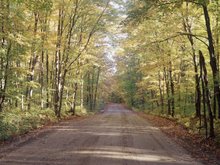
There are about two million Puerto Ricans in the United States. Most of them live in New York City. Puerto Ricans consider themselves Americans but they are also proud of their island and their culture: music, dance, customs and traditions, food, arts, religion, and language. They are a lively and happy people.
CUSTOMS AND TRADITIONS
Puerto Rican culture is alive in our community. Puerto Ricans keep their customs strong by keeping their traditions. Thanksgiving, Christmas, New Year's Day, and Puerto Rican Day are the best times to see, hear, and feel the spirit of being Puerto Rican. On these holidays Puerto Rican families come together. People in our community enjoy what it is to be a family- Puerto Rican and American. And being American you can either speak English or Spanish and make new traditions.
We celebrate the holidays much like the people in Puerto Rico do. Parents and grandparents bless the children with "La Bendicion". We stay in touch with our families and help out when needed. We also try to speak our language at home so that it is handed down from one generation to the next.
Every year Puerto Rican families in New York celebrate Puerto Rican Day either by joining or watching the parade in Manhattan with a Puerto Rican flag in hand or just viewing it on TV. They also hang flags in their cars or homes. This is one way many Puerto Ricans remember and show pride in their culture. This has been a tradition for many years and it is a way of keeping Puerto Rican culture alive and strong.
Christmas time is a special celebration for everyone every year. Everyone in the family comes together and enjoys a great time. We sing, dance, and eat many traditional food, such as "all-you-can-eat-buffet" at Christmas with rice, pigeon peas, roast pork, vegetables, and cakes or sweets. It is a mix traditional Puerto Rican and American treats with candy canes, chocolates, and other treats for children. Special Navidena music is played during this special holiday season. You can also hear Latin music and see the people dancing the Salsa and the Bolero. For this occasion, we do not wear special clothing or costume. We dress comfortably to enjoy the occasion.
FOOD
Puerto Ricans eat a special food called tostones for snacks which is fried plantains (large starchy bananas). If you want a hearty meal try a bowl of asopao, a stew made with vegetables, rice, and meat or fish. We eat meals like this for every special occasions. Puerto Ricans love to eat mangoes especially when they are fresh. We also eat many other fruits such as bananas, coconuts, and mangoes.
For lunch or dinner, here are some dishes you may enjoy eating:
1. Frijoles negros (black bean soup)
2. Sopon de pollo con arroz (chicken soup with rice)
3. Pastelon de carne (meat pies)
4. Lengua rellena (stuffed beef tongue)
5. Sesos empanados (breaded calf brains)
6. Lechon asado (barbecued pig)
7. Nisperos de batata (sweet potato balls with coconut)
8. Arroz con pollo (chicken with rice)
9. Boudin de pasa con coco (coconut bread pudding)
CLOTHING
Like the other ethnic groups in our community, Puerto Ricans wear special clothing during special occasions. Women usually wear flowers in their hair, loose colorful blouses, and skirts especially used for dancing. Men wear hats and scarves around their loose shirts. Both show Spanish influence.
MUSIC AND DANCE
Music is always a part of the Puerto Rican way of life. They love to sing and dance during fiestas and festivals. Their music and dance have Spanish influence with flamenco style moves and traditional costumes.
We have different types of music and dance like the Salsa, Danza, Plena, Bomba, and Cha-Cha. It means a lot to very Puerto Rican family to hear the Puerto Rican beat.
Salsa ia a spicy dance because of its beat. Musicians blend African and Caribbean rhythms for the beat that always gets the crowd to dance. Salsa bands have several singers, a piano, a bass (large stringed instrument), trumpets, trombones, and saxophones. We use the Salsa for concerts, festivals, and other special gatherings like Block Association parties and shows. We also use the maracas (rattles) or tapping cowbells. Whenever Puerto Ricans hear the Salsa they get up and start dancing to the beat of the drum.


No comments:
Post a Comment